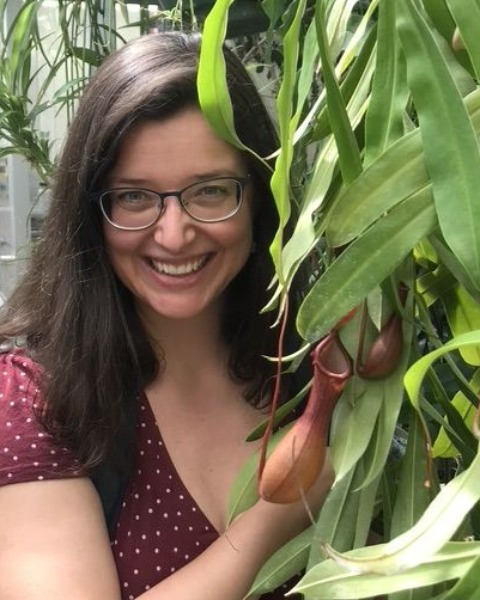Back
Contributed Talk
Session: : Communities: Disturbance And Recovery 5
COS 99-4 - Microbial community coalescence in a controlled, natural system
Tuesday, August 8, 2023
2:15 PM - 2:30 PM PDT
Location: B113

Leonora S. Bittleston
Assistant Professor
Boise State University
Boise, Idaho, United States- GL
Gabriel E. Leventhal
PharmaBiome, Switzerland
- OC
Otto X. Cordero
MIT, United States
Presenting Author(s)
Coauthor(s)
Abstract: Our ability to predict and manage ecosystem dynamics is limited by complex, emergent properties that arise as individuals interact with one another and their environment. Information is particularly deficient for microbes, despite the fact that they make up the majority of Earth’s biodiversity and harbor the majority of life’s metabolic capabilities. We need controlled model ecosystems to learn how to predict microbial dynamics and derive fundamental principles. Here, we ask: how does the mixing, or coalescence, of established bacterial communities impact the newly created communities? Do we see increased alpha diversity, modules that change together, replacement by closely related species, or certain dominant species sweeping to high abundances? To increase our knowledge of microbial community dynamics, we have developed a lab-tractable model ecosystem using the naturally-occurring aquatic pools in the pitchers of carnivorous pitcher plants. Pitcher microcosms are an ideal experimental system for multiple reasons. Primarily because (1) they contain intermediate levels of bacterial species richness with a highly culturable community, and (2) they represent small, naturally-replicated ecosystems where microbes assist in degradation of insect detritus. For this experiment, we used ten distinct communities originally isolated from Sarracenia purpurea pitcher plants in Massachusetts and then grown in tubes with acidified, ground cricket media in a laboratory environment for over two months. The communities were allowed to reach an equilibrium and then all ten of the communities were mixed together in equal volumes, in all 45 possible combinations. The resulting 45 communities were maintained with 1:100 weekly dilutions into fresh cricket media for 16 weeks. Samples were frozen each week and characterized using 16S rRNA amplicon sequencing. We also isolated Individual strains from the communities, and sequenced the genomes of 34 species as well as taking physiological measurements of growth rates and enzyme activity. Results showed an increase in alpha diversity after coalescence, but not a full union of the two starting communities. Certain species dropped out, while others were consistently dominant across multiple mixes. The mixed communities generally differed from either starting community, so no entire starting community was dominant. We used Latent Dirichlet Allocation (LDA) to identify mixed membership clusters across the different coalescent communities, and incorporated our knowledge of functional capabilities from the genomes and physiological assays. Overall, we find clear patterns when mixing complex communities. Our results will lead to new hypotheses and expectations for microbial community dynamics in diverse environments.
